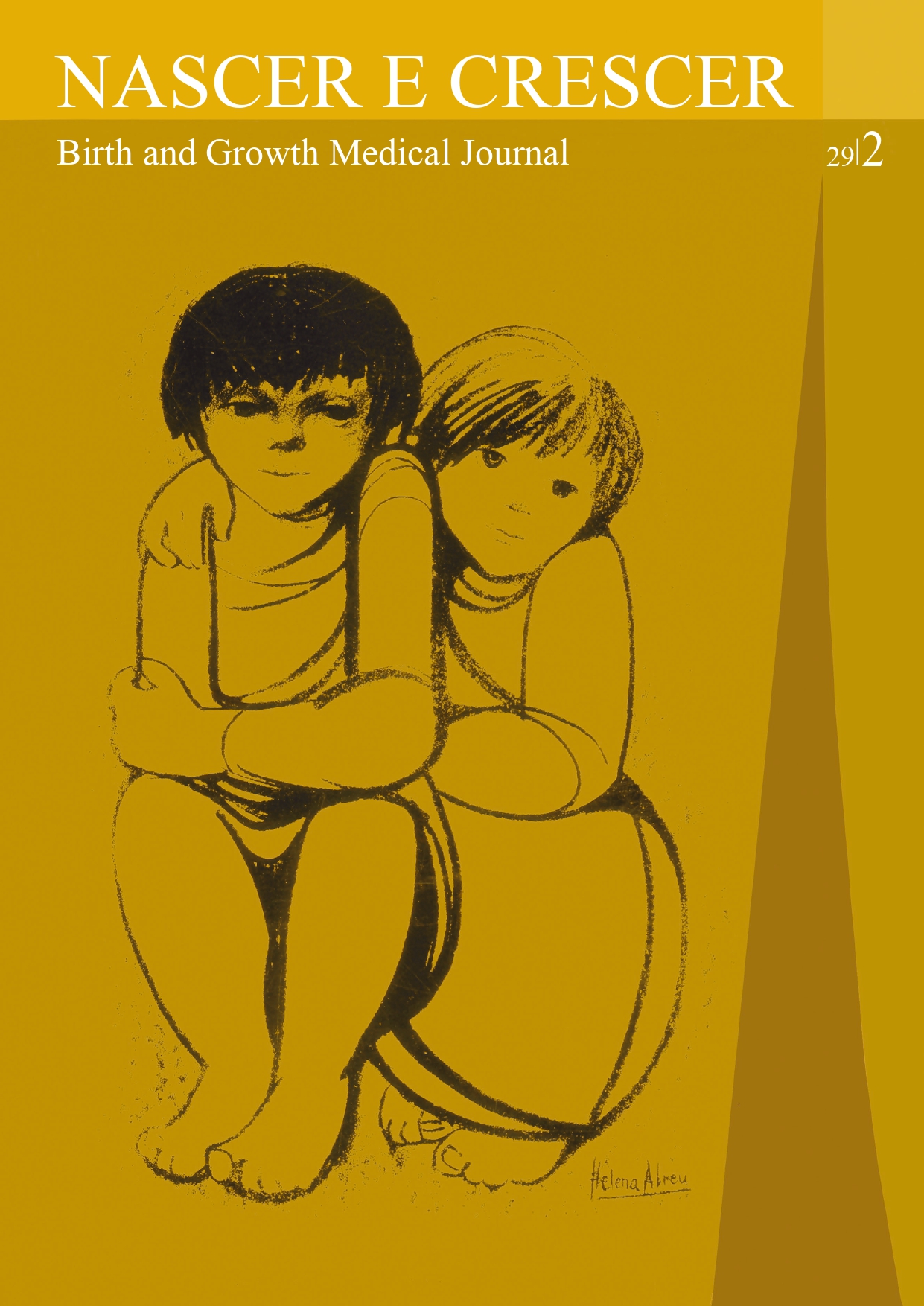Eating disorder - a diagnosis of exclusion
DOI:
https://doi.org/10.25753/BirthGrowthMJ.v29.i2.15091Keywords:
adolescence, eating disorders, genetic testing, myotonic dystrophy type 1Abstract
In adolescents with weight loss, diagnoses other than eating disorders should be considered, namely neurological diseases. A 16-year-old girl with an intellectual development disorder was referred to the Adolescent Medicine outpatient clinic from Child Psychiatry with a diagnosis of eating disorder and persistent anemia. Her body mass index was consistently below the fifth percentile and long-lasting eating difficulties were reported since the age of 15. The girl had no other gastrointestinal, articular, or respiratory complaints, neither polyuria, polydipsia, or recurrent fever. Parental divorce and domestic violence were reported. The patient complained of excessive daytime sleepiness, asthenia, intermittent myalgia, and muscular weakness episodes. Phenotypic characteristics and personal medical history led to clinical suspicion of a neuromuscular disease and genetic study confirmed myotonic dystrophy type 1. This case highlights the importance of considering other diagnoses besides eating disorders in adolescents with eating problems. An exhaustive evaluation of personal and family medical history, patient complaints, and detailed physical examination is mandatory.
Downloads
References
Rome ES, Strandjord SE. Eating Disorders. Pediatric in Review. 2016; 37:323-336.
Meola G, Cardani R. Myotonic dystrophies: An update on clinical aspects, genetic, pathology, and molecular pathomechanisms. Biochim Biophys Acta. 2015; 1852:594–606.
Fiszer A, Krzyzosiak WJ. RNA toxicity in polyglutamine disorders: concepts, models, and progress of research. J Mol Med. 2013; 91:683–91.
Bouchard JP, Cossette L, Bassez G, Puymirat J. Natural history of skeletal muscle involvement in myotonic dystrophy type 1: a retrospective study in 204 cases. J Neurol. 2015; 262:285-93.
Engvall M, Sjögreen L, Kjellberg H, Robertson A, Sundell S, Kiliaridis S. Oral health status in a group of children and adolescents with myotonic dystrophy type 1 over a 4-year period. Int J Paediatr Dent. 2009; 19:412–22.
Umemoto G, Nakamura H, Oya Y, Kikuta T. Masticatory dysfunction in patients with myotonic dystrophy (type 1): a 5-year follow-up. Spec Care Dentist. 2009; 29:210–4.
Lau JK, Sy RW, Corbett A, Kritharides L. Myotonic dystrophy and the heart: A systematic review of evaluation and management. Int J Cardiol. 2015; 184:600–8.
Turner C, Hilton-Jones D. Myotonic dystrophy: diagnosis, management and new therapies. Curr Opin Neurol. 2014; 27:599.
Hicks CW, DeMarsh S, Singh H, Gillespie LA, Worley S, Rome ES, et al. Knowledge about various contraceptive methods in young women with and without eating disorders. Int J Eat Disord. 2013; 46:171-6.
Bergström I, Crisby M, Engström AM, Hölcke M, Fored M, Kruse PJ, et al. Women with anorexia nervosa should not be treated with estrogen or birth control pills in a bone-sparing effect. Acta Obstet Gynecol Scand. 2013; 92:877-80.
Downloads
Published
How to Cite
Issue
Section
License
Copyright and Authors' Rights
All articles published in Nascer e Crescer - Birth and Growth Medical Journal are Open Access and comply with the requirements of funding agencies or academic institutions. For use by third parties, Nascer e Crescer - Birth and Growth Medical Journal adheres to the terms of the Creative Commons License "Attribution - Non-Commercial Use (CC-BY-NC)".
It is the author's responsibility to obtain permission to reproduce figures, tables, etc. from other publications.
Authors must submit a Conflict of Interest statement and an Authorship Form with the submission of the article. An e-mail will be sent to the corresponding author confirming receipt of the manuscript.
Authors are permitted to make their articles available in repositories at their home institutions, provided that they always indicate where the articles were published and adhere to the terms of the Creative Commons license.


